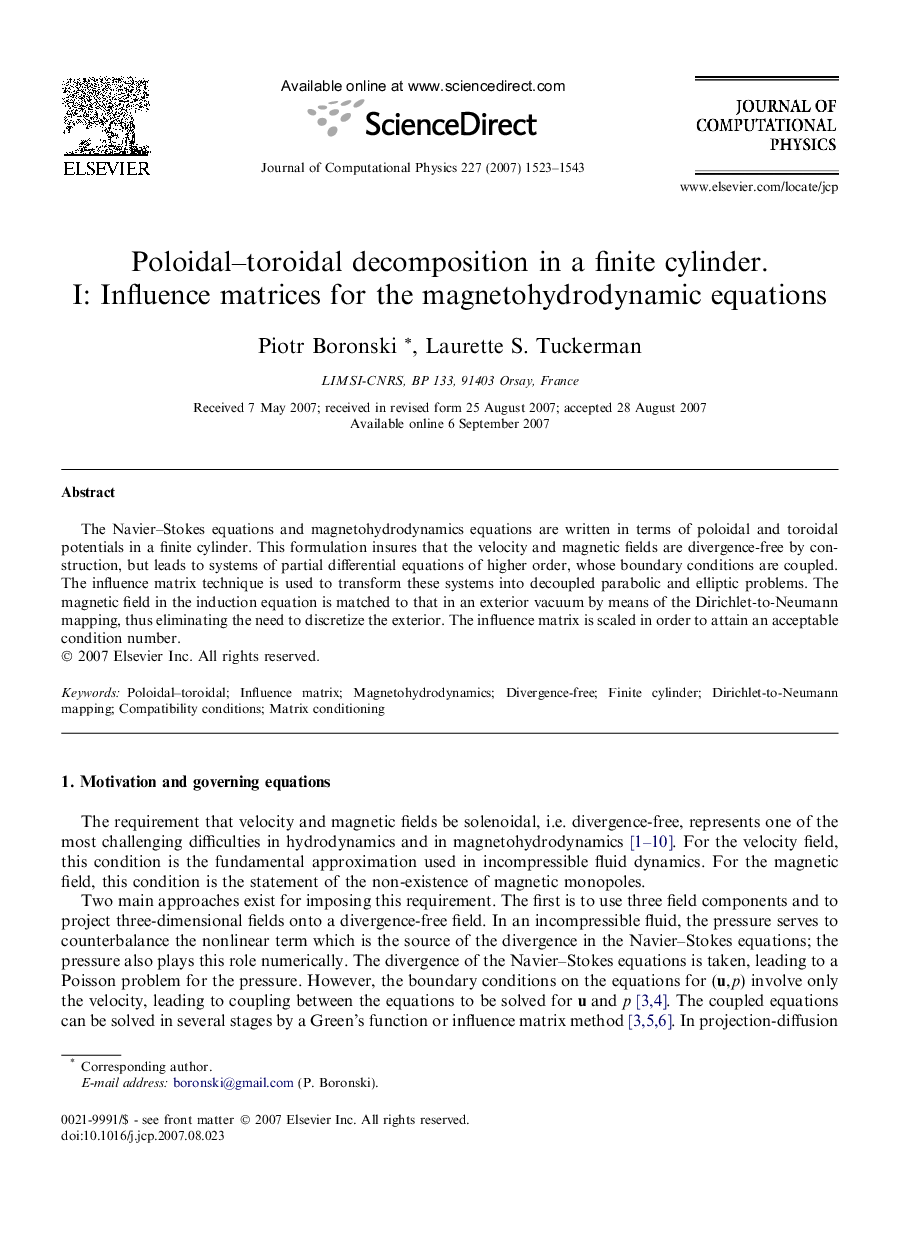| Article ID | Journal | Published Year | Pages | File Type |
|---|---|---|---|---|
| 521391 | Journal of Computational Physics | 2007 | 21 Pages |
Abstract
The Navier–Stokes equations and magnetohydrodynamics equations are written in terms of poloidal and toroidal potentials in a finite cylinder. This formulation insures that the velocity and magnetic fields are divergence-free by construction, but leads to systems of partial differential equations of higher order, whose boundary conditions are coupled. The influence matrix technique is used to transform these systems into decoupled parabolic and elliptic problems. The magnetic field in the induction equation is matched to that in an exterior vacuum by means of the Dirichlet-to-Neumann mapping, thus eliminating the need to discretize the exterior. The influence matrix is scaled in order to attain an acceptable condition number.
Keywords
Related Topics
Physical Sciences and Engineering
Computer Science
Computer Science Applications
Authors
Piotr Boronski, Laurette S. Tuckerman,
